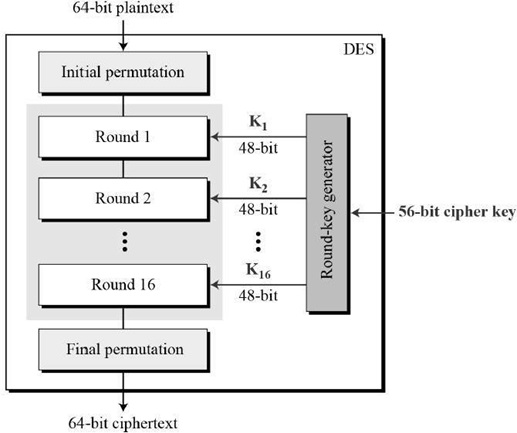In the evolving sphere of cybersecurity, the Data Encryption Standard (DES) stands as a digital relic, akin to an ancient fortress that once shielded a thriving civilization but now lies in ruin. This cryptographic algorithm, introduced in the 1970s, was a trailblazer in establishing standards for encrypting sensitive data. Yet, as time progresses, the question arises: is DES obsolete? To address this, we must delve into its history, functionality, limitations, and the current landscape of cryptography.
Initially adopted by the National Institute of Standards and Technology (NIST) in 1977, DES was built on a solid foundation for its time. It employed a symmetric key algorithm, meaning the same key was used for both encryption and decryption. The algorithm processes data in 64-bit blocks, utilizing a key length of 56 bits. This may seem formidable, but as computational power burgeoned, the walls of this fortress began to crumble. The rapid proliferation of technology significantly expanded the capabilities of adversaries, leading to vulnerabilities previously unconceived.
One of the most striking analogies when considering DES is that of a key to a door. Initially, the key fit snugly, efficiently unlocking the door to secure information. Yet, as the years went by, the door’s mechanism became antiquated and easy to manipulate, rendering the old key ineffective. In the late 1990s, cryptanalysts demonstrated that DES could be compromised through brute-force attacks—wherein an attacker systematically tries every possible key until finding the correct one. The likelihood of success in such endeavors increased exponentially with the advent of more potent computing technology.
Indeed, DES found itself under siege from both innovative attack strategies and the inexorable advancement of hardware capabilities. The last nail in the coffin came in 1998 when the Electronic Frontier Foundation (EFF) constructed a machine that could break DES in under three days—a stark revelation of its foibles. This event epitomized the algorithm’s decline; what once was heralded as an innovative solution in cryptography became increasingly viewed as a barnacle on the ship of secure communications.
In response to the burgeoning threats, cryptographers sought a more robust alternative. The Advanced Encryption Standard (AES), which was adopted in 2001, emerged as the phoenix rising from the ashes of DES. AES employs key lengths of 128, 192, or 256 bits, which exponentially increases its resilience against brute-force attacks. This transformation in encryption technology marked a paradigm shift, highlighting the necessity for continual evolution in the cryptographic realm.
However, the significance of DES cannot be entirely dismissed. It served as a crucial stepping stone that propelled the field of cryptography, influencing the development of more sophisticated algorithms. Consider the evolution of encryption akin to the stages of human ingenuity: initial tactics may be rudimentary, but they lay the groundwork for future breakthroughs. Despite its operational vulnerabilities, DES provided valuable insights into cryptographic standards, symmetry, and the importance of key length.
This perspective propels us toward understanding why DES endures in discussions concerning encryption. While it may be viewed as obsolete in its practical applications, DES continues to play a role in the educational landscape, providing a blueprint for understanding the intricacies of cryptographic methodologies. The evaluation of its mechanisms shapes the awareness of both historical and contemporary encryption tactics, enabling a new generation of cryptographers to learn from past missteps.
Nevertheless, reliance on DES in current applications is ill-advised. Its vulnerabilities are too pronounced in today’s digital milieu, where threats are not merely the work of individuals but often involve organized cybercriminals wielding advanced technologies. Organizations and individuals safeguarding sensitive data must employ encryption methods that resist contemporary attack vectors, with AES and other modern algorithms being preferable alternatives. The fortress needs stronger walls; the time for nostalgia has passed.
Moreover, the demise of DES resonates with broader themes in technology and security. It signifies a key lesson in understanding the lifecycle of technological tools—innovation begets obsolescence. The cryptographic community must consistently re-evaluate the standards in use, ensuring that the fortresses being erected today can withstand the onslaught of tomorrow’s digital adversaries. As the pace of computational advancement continues to accelerate, the perpetual refinement of cryptographic standards becomes not just prudent but paramount.
In summation, while DES may be relegated to the annals of history as a digital artifact, its legacy endures in the principles it established. Its obsolescence serves as a stark reminder of the necessity for continuous adaptation in the sphere of information security. As practitioners gaze toward the horizon, the true challenge lies in fostering an environment where encryption can stay ahead of burgeoning threats—a task requiring vigilance, innovation, and an unwavering commitment to securing the digital landscape.








Leave a Comment